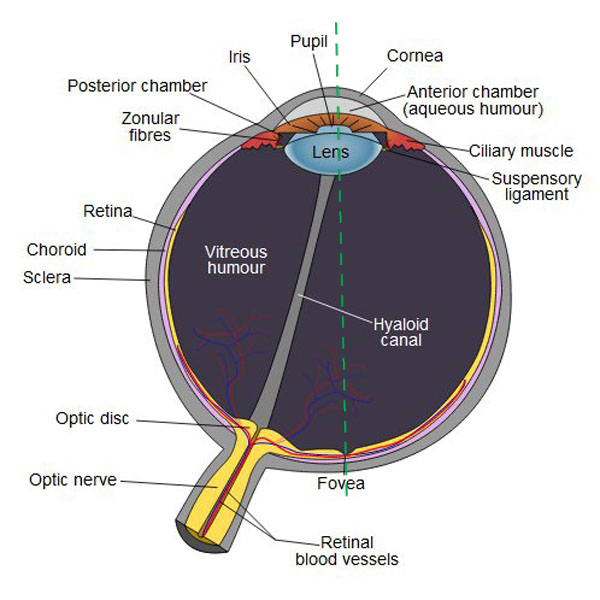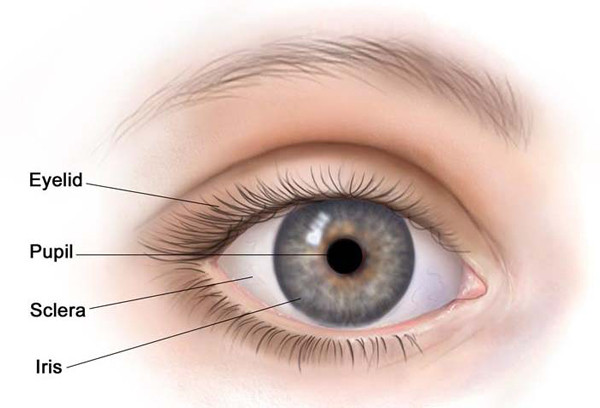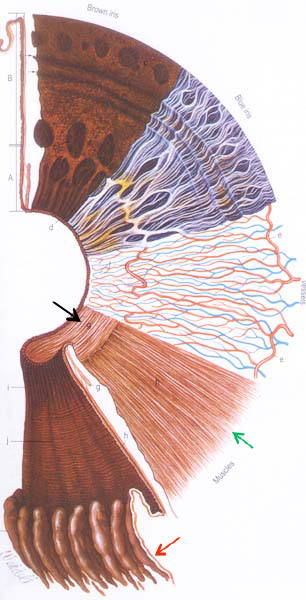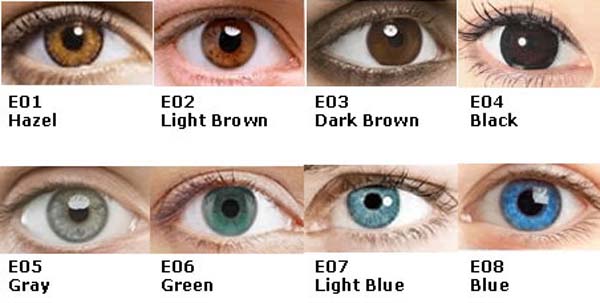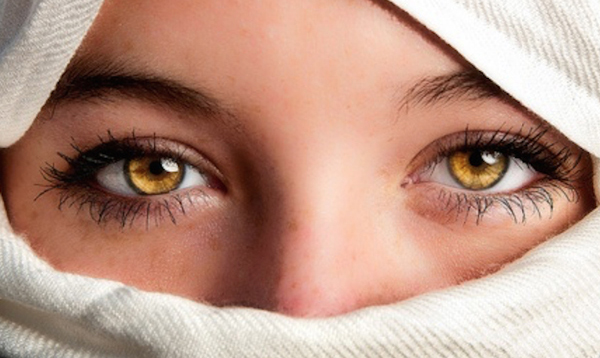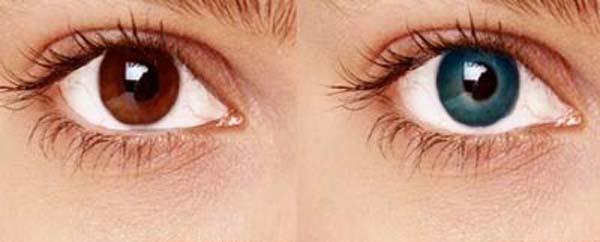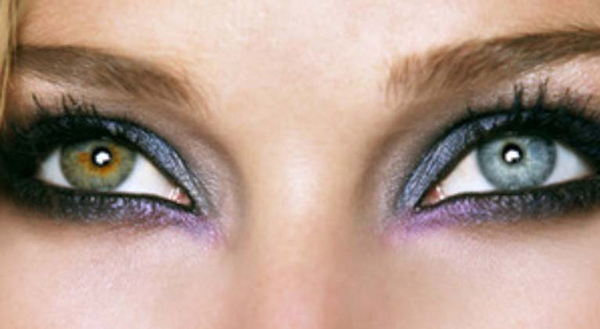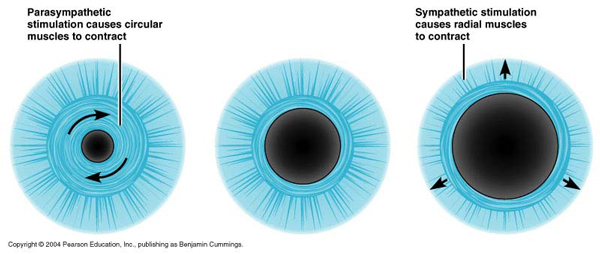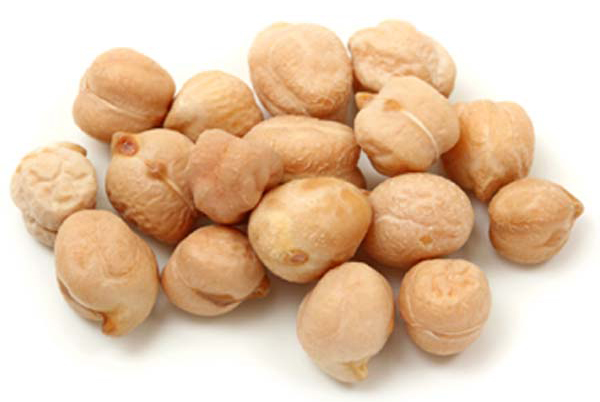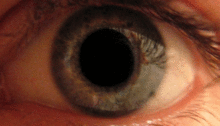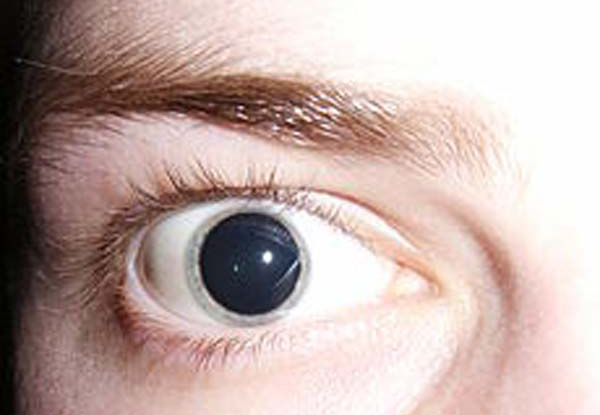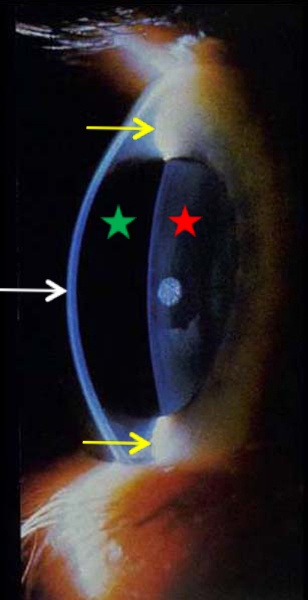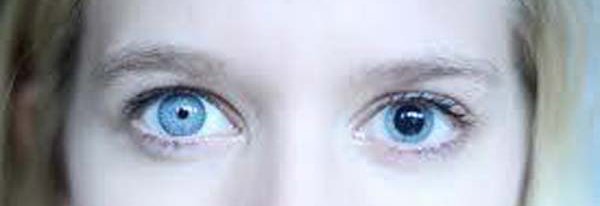We’ll get to these images and eye secks later, but isn’t this is a grand place to begin today’s Anatomy Lesson #31? An old English Proverb posits that “The eyes are the window of the soul.” Well, for today’s lesson, we will peer into these wonderful windows to learn about their structure and function.
Back in Anatomy Lesson #29, it was proposed that the eye is the most elegant and complex of our sense organs. After we consider a brief overview of eye structure, this entire lesson is devoted to the iris, a part so detailed that it requires its own lesson!
Let’s look at a “dissection” of the human eye using a horizontal section through the right eyeball (Photo A – bird’s eye view). The cornea projects from the front surface. The iris with its central opening, the pupil, lies behind the cornea. The biconvex lens is located immediately behind the iris. The red tissue near the lens is the ciliary body (labelled ciliary muscle in Photo A). The sclera is the outer fibrous coat that we see as the white of the eye. The choroid, a layer rich in blood vessels, lies internal to the sclera. The neural coat or retina lies inside the choroid. At the back of the globe are fovea, optic disc and optic nerve. The fovea, site of greatest visual acuity, lies in our visual axis (Photo A – dashed green line). The optic disc, or blind spot, is in front of the optic nerve. The optic nerve (cranial nerve II) at the back of the eyeball carries electronic impulses from the retina to vision centers in the brain. In each eye, the optic nerve angles towards the nose.
The eyeball has three chambers. The anterior chamber (Photo A, light gray crescent) is a space between cornea and iris that is filled with the watery aqueous humor. A space between iris and lens (Photo A, small dark gray area) is the posterior chamber, also filled with aqueous humor. Deep to the lens is the largest space of the eyeball, the vitreous chamber (Photo A, large dark gray area); it is filled with vitreous humor, a gel-like material.
Photo A
With the overview completed, we will consider the iris: first its structure, then its color, and finally its ability to change size.
The iris is a thin circular structure deep to the cornea that has a central hole, the pupil (Photo B); think of the pupil as the absence of iris. Shaped a bit like an old-time 45-rpm record, the iris controls the diameter of the pupil and therefore the amount of light reaching the retina.
Photo B
Learning the parts of the iris helps us understand its purpose. Photo C shows one-half of an iris with pie-shaped segments to illustrate different features. The iris has the following layers from front to back:
- Stroma and sphincter muscle
- Dilator muscle
- Posterior pigment cells
Stroma is the part of the iris that we can see: an amazing meshwork of collagen fibers, structural cells, melanocytes (Photo C – 1st and 2nd pie segments) and small blood vessels (Photo C – 3rd pie segment). The sphincter muscle is a ring of smooth muscle cells (Photo C – 4th pie segment, black arrow) surrounding the pupil.
Behind the stroma is the dilator muscle formed of specialized myoepithelial cells which contain both contractile filaments and melanin. Myoepithelial cells radiate away from the pupil much like the spokes of a wheel (Photo C – 4th pie segment, green arrow).
Posterior pigment cells contain lots of melanin and form the deepest layer (Photo C – 5th pie segment, red arrow – layer is flipped to show the back). Melanin inside the posterior pigment cells and the myoepithelial cells absorbs light rays except those admitted through the pupil. This design controls the amount of light rays reaching the retina.
Photo C
Now that we have an idea of iridial (adj.) structure, let’s consider the many colors of the iris. People refer to the color of the eyes but they really mean the color of the iris. The word iris is derived from the Greek goddess, Iris, meaning rainbow. Although the iris doesn’t come in all the colors of the rainbow, its hues are quite varied.
Herself often uses iridial color to describe her beloved Outlander characters. In the Outlander book alone, we read about eyes of amber, black, blue, brilliant blue, dark blue, light blue, blueberry, brown, liquid brown, cornflower, gold, golden, green, grey (English spelling), dove grey, hazel, saffron, sherry, soft blue, soft grey and yellow… What an imagination!
In the past, iridial color has sometimes presented a problem as a legitimate child was expected to have irises the same color as one or both parents. Recall how Geillis (Starz, episode 111, The Devil’s Mark) was treated at the witch trial for dabbling in the murky arts? Well, some women have faced accusations and indignities for bearing children whose irises differed in color from those of either parent. Later, science declared that iris color was a simple dominant-recessive inherited trait, e.g. brown irises dominant over blue. An old myth in human genetics is that two blue-eyed parents cannot have a brown-eyed child. Unfortunately this erroneous concept is still being taught in some genetic courses. Not so! New data has caused science to revise understanding of eye color. Iris color is now known to be a polygenetic trait with perhaps as many as 15 genes operating to determine final iris color. The genetics of eye color are so complex that almost any parent-child combination of iris colors can and does occur. Go, science!
Human iris color ranges from very light blue to very dark brown. Scientists generally agree that there are at least five or six major colors plus many mixtures: hazel, brown, black (actually very dark brown), grey, green and blue (Photo D). Indeed, iris color is so diverse that charts and scales have been developed in an effort to categorize and standardize the wide spectrum of iris colors.
Photo D
In Anatomy Lesson #5 we learned that skin contains melanin, a pigment produced by melanocytes. Well, the iris contains melanocytes too, but the melanin is not blue, grey, hazel or green. Rather, iris melanin ranges from light brown to dark brown (eumelanin) with a wee bit of yellow to red (pheomelanin) sometimes present.
So, if irises do not contain blue, gray, green or hazel melanin, what accounts for these colors? Well, the causes are a bit complicated but four factors play a role:
- Melanin content in pigment epithelium and myoepithelial cells at the back of the iris: although there are slight differences, both cell types are typically heavily pigmented in all eyes (an exception is noted below). These layers absorb all the light that reaches them.
- Melanin content within stromal melanocytes: stromal melanin varies greatly with different iris colors (compare 1st and 2nd pie segments of Photo C). Brown or “black” irises have heavily pigmented stromal melanocytes. Blue or grey irises have little or no stromal melanin. Green irises have light brown stromal melanin or amber (see below) pigments. Hazel irises contain moderate amounts of light brown melanin.
- Light scattering properties of stromal collagen: these molecules scatter light rays depending on their size and density, much like water droplets in the air makes the sky appear grey. Grey irises contain larger collagen deposits that scatter light in this manner.
- Light scatter properties of stromal turbidity: This is a fancy way of saying pigments and other stromal molecules also scatter light but in a different way: long wave light is absorbed and short wave light is reflected back towards the viewer. This effect is similar to a type of light scattering that causes the sky to appear blue (it isn’t) and occurs is blue, hazel and green eyes.
An exception to the above occurs in a true albino who lacks all iridial pigment so the iris appears red from its blood supply (Photo C, 3rd pie section).
Now, let’s consider some iris colors from Outlander characters. Here is wee winsome Willie with his big beautiful brown irises. He informs Claire that Jamie has always helped him so he will help rescue Jamie from Wentworth Prison (Starz episode 114, The Search). But, mayhap he carries a soft spot in his heart for Claire? Show him the way lassie! Willie has oodles and oodles of dark melanin in the stromata (pl.) of his irises so they appear very dark brown.
DNA studies on ancient remains show that all humans once had brown eyes. They also show that blue eyes are probably the result of a genetic mutation that occurred some 6,000 to 10,000 years ago and may be the source of all blue-eyed humans alive on the planet today.
Dougal’s light blue irises inform us that there is little or no melanin in his iridial stroma (Starz episode 109, The Reckoning). Notice, however, that in some light his irises appear gray or blue-grey. Dougal is a likely candidate for the scattering effect of external light on stromal collagen explaining why his eyes sometimes appear bluer or grayer depending on lighting conditions, how much money is involved or if kissing Claire is on his mind. Either way, gie him back that bag o’ gold, Colum!
In the Outlander books, Herself informs us that Claire has golden/amber/whisky-/sherry-colored eyes. Whew, lucky lady! Jamie remarks on Claire’s unusual eyes – shortly after their wedding:
The finger moved to my face, drawing from temple to cheek, smoothing the hair back behind my ear. I remained immobile under his scrutiny, trying not to move as his hand passed behind my neck, thumb gently stroking my earlobe. “Golden eyes; I’ve seen a pair like that once before—on a leopard.”
Amber eyes in humans are unusual (Photo E). Such irises are typically a solid color with strong yellow/gold or russet/copper tints. The basis for amber coloration is poorly understood but some scientists believe it is due to deposits of lipochrome. Lipochrome is not a type of melanin; rather it is an aggregation of various molecules of golden hues. Lipochrome may also account for the yellowish specks or patches in green eyes or gold tones in hazel and blue irises.
Photo E
Also, stromal pigmentation may not be uniform between a pair of eyes or even within one eye. There are wedges, flecks, rings and patches of varying stromal pigmentation. Consider Captain Rat-Man’s right iris as “witch-that-she-is” Claire gives him the hour of his death (Starz episode 115, Wentworth Prison). Oooh, BJR, did ye get a bit o’ bad news? Aye, he is going to pay the price for messing with her Jamie! He’s a bad man, but in this light, his lovely hazel eyes contain scattered dark brown flecks. Such flecks are sites of heavier stromal pigmentation. Out damn spot (“the Scottish play”, Act 5, Scene 1)!
Claire’s beautiful blue eyes are on full display as she presents a delightful example of a dark blue limbal ring, a site of increased light scattering at the outer rim of the iris (Starz episode 116, To Ransom A Man’s Soul). Her pupils are contracted as she inspects her beloved red-heided Highlander: whew, he hasn’t started to puke yet! Eye-love if I ever kent it! (love, love, love her hair and elegant neck!)
Can the irises change color? Well, yes, they can. For example, many babies are born with blue eyes that change color with age. Lightening or darkening of iris color has been reported during early puberty, pregnancy, and sometimes after serious trauma suggesting that chemical reactions and hormonal changes can influence iris color. A particular drug used to treat glaucoma can also increase pigmentation of the iris and a few other diseases can change iris color. Recently, a patient suffering from the Ebola virus reported that the infection turned one of his blue irises to green.
Many people consider blue irises to be a most desirable color. Pertinent to us Outlanderphiles – Scotland has the second highest rate of blue irises in the world: 50% of Scotland’s population has blue eyes and that number jumps to 86% if green eyes are included! Finally, for thrill seekers, a laser treatment is now available that changes brown irises to blue by eliminating the brown melanin of the iridial stroma (Photo F). Hopefully, readers will get thoroughly informed about side effects before opting for such a treatment.
Photo F
Another interesting fact about iris color: likely, you have seen individuals with one iris a different color than its counterpart. This is heterochromia and it may be complete wherein each iris is a different color (Photo G) or partial where part of one iris is a different color. This uncommon condition can be inherited or acquired through disease or injury. Actually, quite a few actors have heterochromia. One actor, well known for roles in early spaghetti westerns, had complete heterochromia and was made to wear a contact lens on the light colored iris because producers feared negative reactions from the viewing audience! I doubt this would be a problem for today’s movie goers.
Photo G
Ok, done with iris color. Let’s talk about pupil size…. Question: what do an orgasm, a multiplication problem and a photo of a dead body have in common? Each induces a slight, irrepressible expansion of the pupils. Hee, hee!
How do our pupils change size? Well, this occurs because the iris is equipped with a pair of intraocular (inside the eyeball) muscles that were mentioned earlier. We do not have voluntary control over these muscles.
Sphincter pupillae is the smooth muscle cells that encircle the pupil. Like a sphincter, this muscle contracts to close the pupil and reduce the amount of light reaching the retina (Photo H – left image). This muscle is under control of the parasympathetic division of the autonomic nervous system; known by the acryonym PSNS, it activates in response to intense light and during rest, repose and rejuvenation.
Dilator pupillae muscle is composed of the myoepithelial cells that contain melanin pigment and muscle filaments. These are arranged radially like the spokes of a wheel (Photo H – right image). As these cells contract, the pupil enlarges to increase the amount of light reaching the retina. Dilator pupillae is under control of the sympathetic division of the autonomic nervous system; known for short as SNS, it activates in response to dim light and during fright, fight and flight responses.
NOTE: The middle panel of Photo H represents the iris and pupil with muscles at rest.
Photo H
You should know that light intensity alone is sufficient to exert major effects on pupillary diameter. Studies have shown that in very bright light, a normal pupil can shrink to a tiny 1.0 mm diameter.
“One misty, moisty morning when cloudy was the weather,” they meet Hugh Munroe amid the rain and heather. This day looks very misty and cold! Nevertheless, the light intensity is sufficient to shrink Claire’s lovely pupils as she shares bread and cheese with her new hubby and arrow deflector (Starz, episode 108, Both Sides Now)!
Such studies also show that with very dim light, the pupil can enlarge to 8.0 mm – roughly the size of a chickpea (Photo I – garbanzo bean)!
Photo I
Light rays aren’t the only stimuli that affect pupillary size: some years ago, a Princeton psychologist showed that pupil size increases in proportion to the difficulty of an assigned task (i.e. stress or challenge): multiply nine times 13 and the pupils dilated slightly. Calculate 29 times 13 and they widened further and remained dilated until subjects found the answer or stopped trying. In a related experiment, subjects were required to recite a series of seven digits from recall; their pupils enlarged steadily as the numbers were presented one by one and shrunk steadily as they unloaded the digits from memory. Ergo, our pupils reflect exposure to stress and mental effort.
In summary, pupils constrict in response PSNS stimulus and excessive light but also prior to REM sleep and by conditioning stimuli. Pupils dilate in response to SNS stimulation and low light and also with sexual stimulation, mental challenge, some CNS psychoactive drugs and conditioning to a particular stimulus.
We’ve known from the get-go that Jamie’s pupils can dilate verra well. Anatomy Lesson #2 described his pupillary response when “Not-A-Wet-Nurse” Claire reduces his dislocated shoulder (Starz episode 101, Sassenach). That lesson explains how his dilated pupils were consistent with the SNS-induced fright, flight and fight response. Och, lassie, that hurt!
But then, along comes Starz episode 116 (To Ransom a Man’s Soul) and whoa! This episode generated lots of on-line chatter as some fans posited that there was no way Jamie’s iris could dilate to the degree shown without the aid of CGI, dilating medications or contact lenses.
Well, remember, given low light alone, they can dilate to the size of a chickpea. Add to that the stressing and depressing back-licking antics by BJR and the pupil dilates even more! Talk about fight, fright and flight! I argued for natural dilation but despite my efforts, the explanation was met with skepticism so I asked “Jamie.” To my delight he responded from a span of 202 years, that indeed his dilated pupils were unaided by anything (except the creepy crawly circumstances and very low dungeon lighting – my words)! Kudos to his fantastic acting skills!
Back to pupil dilation: just how large can the pupil dilate? More than 8 mm if dilating drops are applied! You can see in Photo J, that with such medications, the iris is reduced to a very thin rim completely dominated by the pupillary opening.
Photo J
Would you like to see another view of the pupil after drug-induced dilation? Take a wee keek at this next amazing image (Photo K)! The narrow vertical slice of light running down the surface of eyelids and eye is from a slit lamp. The beautiful arc of cornea (Photo K – white arrow) bulges from the anterior surface of the eyeball. Deep to the cornea is the dark anterior chamber (Photo K: green star). Yellow arrows mark the rim of the iris; its tissues actually fold back during pupil dilation. The red star marks the convex anterior surface of the lens. Generally speaking, dilating medications paralyze the sphincter pupillae allowing the dilator pupillae muscle to contract unopposed.
Photo K
Like other body parts, the iris has diseases and disabilities, but there are too many to cover in this lesson. One point worth mentioning: in general, both pupils should be very nearly the same size. Slight variations in pupil size can be normal, but if you notice a sudden and significant difference between the size of both irises, known as anisocoria, then you should see a specialist to rule out significant medical issues (Photo L).
Photo L
The iris is endlessly entertaining because it is a body part we can readily see and appreciate. But, it is time to close this session. What better way than to praise the best blue eyes ever with a little more eye secks and an Ode to Sawny Blue Eyes!
Ode to Sawny Blue Eyes
I may be a dutter,
Or even a nutter,
Embroiled in a true-stew.
It makes us all mutter
And then start to stutter,
As brilliant orbs come into view.
Bread swiped with butter
Sets hearts all aflutter,
Wit’ big eyes of bonny blue!
Thoughts in a clutter
Spitter and sputter,
What in the world shall we do?
With our minds in the gutter
Together we utter
“Gie that fab-lad his just due!”
A deeply grateful,
Outlander Anatomist.
photo creds: Starz, Grey’s Anatomy, 39th edition (Photo C), Orgasm joke from 2012 Scientific American, Outlander Anatomy collection (Photo K), www.aclens.com (Photo A), www.apsubiology.org (Photo K), www.cancer.gov (Photo B), www.enwikipedia.org (Photo M), www.imgbuddy.com (Photo E), www.memrise.com (Photo H), www.nataliacoretraining.com (Photo I), www.9gag.com (Photo L), www.pinterest.com (Photo G), www.pitchengine.com (Photo H), www.sites.psu.edu (Photo F), www.talks.fredite.com (Photo D), www.en.wikipedia.org (Photo J; gif of pupillary reflex), Jamie eating bread http://henricavyll.tumblr.com



